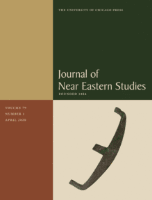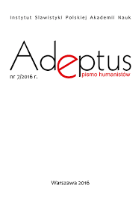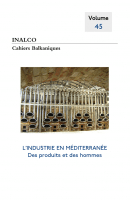
Acta Orientalia Academiae Scientiarum Hungaricae
Scope & Guideline
Cultivating Insightful Dialogues in Humanities Research
Introduction
Aims and Scopes
- Linguistic Studies:
The journal features extensive research on various languages, including Turkic, Mongolic, and Indo-European languages, examining their grammatical structures, historical development, and lexical studies. - Cultural and Historical Research:
It encompasses studies on the cultural practices, historical narratives, and societal structures of Oriental societies, providing insights into their evolution and interconnections. - Religious and Philosophical Texts:
The journal publishes analyses of religious texts and philosophical works from various traditions, exploring their impact on cultural and intellectual history. - Archaeological and Manuscript Studies:
There is a strong focus on archaeological findings and manuscript studies, particularly those related to the Silk Road and Central Asia, contributing to the understanding of historical interactions. - Interdisciplinary Approaches:
Research often employs interdisciplinary methodologies, integrating linguistics, history, anthropology, and cultural studies to provide a comprehensive understanding of the subjects.
Trending and Emerging
- Interdisciplinary Linguistic Research:
There is a significant rise in interdisciplinary research that combines linguistic studies with historical and cultural contexts, emphasizing the importance of language in understanding societal changes. - Postcolonial Perspectives:
Emerging themes related to postcolonial studies are gaining traction, with scholars examining the impacts of colonial histories on contemporary societies and cultural identities. - Digital Humanities Approaches:
The integration of digital tools and methodologies in research is becoming more prevalent, facilitating new ways of analyzing texts and data from Oriental studies. - Focus on Minoritized Cultures:
A growing emphasis on the study of minoritized or lesser-known cultures within the broader Oriental context is evident, reflecting a shift towards inclusivity in research. - Environmental and Ecological Studies:
Research exploring environmental and ecological issues, particularly in relation to historical societies and their interactions with the environment, is emerging as an important theme.
Declining or Waning
- Traditional Historical Narratives:
There appears to be a decrease in studies centered on traditional historical narratives of well-known empires, as newer research focuses on lesser-known cultures and local histories. - Classical Literature Studies:
Research related to classical literature, particularly works that have been extensively studied in the past, such as certain epic narratives, is becoming less frequent as scholars shift toward contemporary interpretations and lesser-known texts. - Simplistic Ethnographic Studies:
There is a noticeable decline in simplistic ethnographic approaches that lack depth. Scholars are increasingly favoring complex, nuanced analyses that consider multiple factors influencing cultures. - Overly Broad Comparative Studies:
Comparative studies that do not draw on specific contexts or detailed analysis are becoming less common, as the focus shifts towards more contextually rich and detailed examinations.
Similar Journals

JOURNAL OF INDO-EUROPEAN STUDIES
Advancing Interdisciplinary Insights in Indo-European StudiesJOURNAL OF INDO-EUROPEAN STUDIES, published by the Institute for the Study of Man, is a prestigious academic journal dedicated to the interdisciplinary exploration of the Indo-European languages and cultures. With an ISSN of 0092-2323, this journal has gained notable recognition within the fields of Anthropology, Archaeology, History, Linguistics, and Literature, as evidenced by its commendable placement in the Category Quartiles for 2023. Specifically, it ranks in Q2 in History and Literature, and maintains a strong presence in Q3 across various other humanities disciplines. Though it ceased coverage in Scopus in 2021, it continues to serve as a vital resource for scholars seeking to delve into the complexities of Indo-European studies, presenting both theoretical and empirical research. The journal is particularly significant for researchers aiming to address contemporary questions while reflecting on historical contexts. With a focus on rigorous scholarship, it plays an essential role in fostering discourse among academics and students alike, and remains a crucial platform for contributions within its diverse scope.

Journal of Islamic Manuscripts
Enriching Cultural Insights Through Manuscript StudiesJournal of Islamic Manuscripts is a prestigious academic journal published by BRILL, dedicated to the study and preservation of Islamic manuscripts from their historical, cultural, and artistic perspectives. With an ISSN of 1878-4631 and an E-ISSN of 1878-464X, this journal serves as a vital platform for researchers, professionals, and students interested in Cultural Studies, Visual Arts, and Performing Arts. Housed in the Netherlands, the journal boasts a commendable rank within Scopus, showcasing its significant impact within its fields—ranking #229 in Visual Arts and Performing Arts and #690 in Cultural Studies for 2023. Operating under a traditional subscription model, the journal ensures its contributions are accessible to a global audience dedicated to furthering the understanding of Islamic art and heritage. Spanning from its inception in 2010 through 2024, the journal promises to continue enhancing knowledge and appreciation of the diverse narratives encapsulated in Islamic manuscripts.

BULLETIN OF THE SCHOOL OF ORIENTAL AND AFRICAN STUDIES-UNIVERSITY OF LONDON
Illuminating the Complexities of Oriental and African DynamicsBULLETIN OF THE SCHOOL OF ORIENTAL AND AFRICAN STUDIES-UNIVERSITY OF LONDON, published by Cambridge University Press, stands as a pivotal journal in the fields of Cultural Studies and History, with an impressive track record dating back to its inception in 1917. With a current impact factor that places it in the Q2 quartile for both categories, this journal gives voice to a rich tapestry of research dedicated to the complexities of Eastern and African societies. Researchers exploring the nuances of cultural interactions, historical developments, and socio-political dynamics will find this publication invaluable, as it offers peer-reviewed articles that contribute significantly to the academia surrounding these diverse fields. Although the journal is not open access, it continues to attract a dedicated readership due to its rigorous scholarly standards and reputation for quality. The BULLETIN also boasts a noteworthy Scopus ranking, reflecting its influence and reach within the global academic community. Located in the United Kingdom, the journal serves as a hub for international scholarly exchange, encouraging contributions that delve into the rich heritage and contemporary issues of Oriental and African studies.

JOURNAL OF NEAR EASTERN STUDIES
Bridging Disciplines for a Deeper Understanding of the Near EastJournal of Near Eastern Studies (ISSN: 0022-2968; E-ISSN: 1545-6978), published by University of Chicago Press, stands as a cornerstone of academic discourse in the fields of Archaeology, Cultural Studies, and Linguistics and Language. With a prestigious track record that has evolved since its inception and spanning converged publication years from 1968 to 2024, this journal holds an impressive Q1 ranking in Cultural Studies and Linguistics and Language, and a solid Q2 ranking in Archaeology and Arts and Humanities as of 2023. Despite not offering open access, it is widely regarded for its rigorous peer-reviewed articles that contribute significantly to the understanding of Near Eastern history, culture, and languages. The journal's sustained recognition in Scopus rankings, including a notable 30th rank out of 173 in Arts and Humanities, ensures it remains an essential resource for researchers, academics, and students dedicated to exploring the rich tapestry of the Near East. With its base in Chicago, USA, the Journal of Near Eastern Studies continues to foster interdisciplinary collaboration and scholarly excellence.

ZEITSCHRIFT DER DEUTSCHEN MORGENLANDISCHEN GESELLSCHAFT
Bridging Cultures Through Rigorous Academic InquiryZEITSCHRIFT DER DEUTSCHEN MORGENLANDISCHEN GESELLSCHAFT is a distinguished academic journal published by Harrassowitz Verlag, prominently situated in Germany. With ISSN 0341-0137, it serves as a critical forum for scholars engaged in the fields of Cultural Studies and History. The journal has carved out its niche in the academic community with its Q3 ranking in both disciplines as of 2023, reflecting its commitment to fostering in-depth research and discussions that illuminate various historical and cultural contexts. Despite its current positioning in the lower quartiles, the journal has a specific focus on the interaction between Eastern and Western cultures, thus appealing to researchers, professionals, and students alike who are keen on exploring new insights in a globalized world. While the journal is not open access, it remains an essential resource for those aiming to deepen their understanding of cultural interrelations and historical developments from a German perspective. For further inquiries, the journal can be contacted at its address: Kreuzberger Ring 7B-D, Wiesbaden 65174, Germany.

Adeptus
Cultivating Knowledge Across Slavic Languages and SocietiesAdeptus is a pioneering open-access journal published by the Polish Academy of Sciences, Institute of Slavic Studies, specializing in Slavic studies and cultural research. Since its inception in 2014, the journal has aimed to foster scholarly dialogue and advance knowledge across various disciplines related to Slavic languages, literature, history, and sociology. With an ISSN of 2300-0783, Adeptus has positioned itself as a vital resource for researchers, professionals, and students engaged in Slavic studies, offering a platform for high-quality, peer-reviewed articles that explore diverse topics within the field. The journal's open-access model promotes accessibility and dissemination of knowledge, making it a significant contributor to the academic landscape. Located in Warsaw, Poland, Adeptus continues to thrive as a key outlet for innovative research, inviting submissions that embody rigorous scholarship and insightful perspectives.

BULLETIN OF THE INSTITUTE OF HISTORY AND PHILOLOGY ACADEMIA SINICA
Fostering Dialogue Across Time and Language.BULLETIN OF THE INSTITUTE OF HISTORY AND PHILOLOGY ACADEMIA SINICA is a distinguished academic journal published by the Academia Sinica's Institute of History and Philology, based in Taiwan. Focused on the interdisciplinary fields of history, linguistics, archaeology, and religious studies, this journal provides a scholarly platform for researchers and professionals seeking to disseminate innovative findings and theoretical advancements. Despite its recent Q4 categorization in several areas including archaeology and linguistics, the journal is committed to fostering rigorous dialogue and enriching the academic community's understanding of historical and philological nuances. As an essential resource for those invested in the humanities, particularly within the context of Asian studies, it remains dedicated to enhancing visibility and accessibility to pivotal research. While currently not an open-access publication, it continues to shape the discourse within its field through concise contributions from credible scholars. Join the journal's ongoing mission to illuminate the complexities of history and language, bridging gaps across cultures and time.

Palaeohispanica-Revista sobre Lenguas y Culturas de la Hispania Antigua
Fostering Insight into Iberia's Linguistic and Cultural EvolutionPalaeohispanica-Revista sobre Lenguas y Culturas de la Hispania Antigua is a distinguished academic journal dedicated to the study of ancient Spanish languages and cultures. Published by the INST FERNANDO CATOLICO in Spain, this journal serves as an essential platform for scholars and researchers exploring the rich historical and linguistic heritage of Iberia. With a specific focus on the intersections of archaeology, history, linguistics, and cultural studies, Palaeohispanica has garnered substantial recognition, reflecting its commitment to high-quality research as evidenced by its rankings in prominent Scopus categories, reaching the 80th percentile in History and the 69th in Archaeology. While the journal operates without an Open Access option, it continues to contribute significantly to the academic discourse surrounding ancient Hispania from 2019 to 2023, ensuring that vital research is accessible to a discerning audience. As a Q3 and Q2 ranked publication in various relevant categories, it is an invaluable resource for professionals, researchers, and students eager to delve into the complexities of ancient languages and cultures.

Novye Issledovaniya Tuvy-New Research of Tuva
Exploring the Rich Tapestry of Tuva's HeritageNovye Issledovaniya Tuvy-New Research of Tuva is a prominent open-access journal published by CH K LAMAZHAA since 2009, dedicated to advancing the fields of Anthropology, Cultural Studies, and History. With an impressive Q1 ranking in these disciplines and a robust presence in the Scopus database—ranking 65th in History and achieving a 96th percentile in Anthropology—it serves as an essential platform for researchers and scholars seeking to explore and disseminate new insights regarding the diverse cultural heritage and historical context of the Tuva region in the Russian Federation. The journal is committed to providing accessible, high-quality research, ensuring that vital information reaches a wide audience without barriers. By spanning the years 2016 to 2024, Novye Issledovaniya Tuvy not only reflects contemporary developments but also contributes significantly to the global discourse on cultural identity and historical narratives.

Cahiers Balkaniques
Fostering Dialogue on Balkan Histories and IdentitiesCahiers Balkaniques is a distinguished academic journal dedicated to the study of Balkan languages, cultures, and civilizations, published by the Institut National des Langues et Civilisations Orientales (INALCO). Since its inception in 2004, it has embraced an Open Access model, facilitating unrestricted access to its research articles, making it a vital resource for scholars and professionals in the fields of linguistics, cultural studies, and regional history. With ISSN 0290-7402 and E-ISSN 2261-4184, Cahiers Balkaniques serves as a crucial platform for disseminating research that explores the rich and diverse heritage of the Balkan region. Researchers, students, and professionals alike benefit from its commitment to fostering understanding and dialogue around the intricate social, political, and linguistic dynamics of the Balkans, solidifying its importance within the academic community.